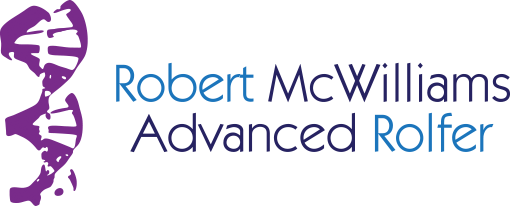The subject of this brief article could be summed up as: for the hip joint to work well in all directions, as in flexion, extension, rotation, circumduction, anteversion and more, it has to be positioned well (as in Rolfing® Structural Integration goals), and it also needs balanced tone. Otherwise, your body will not feel able to release into full range of motion if an area is too weak, not just badly positioned. You will feel tight and want to stretch, but it won’t work.
I am speaking from experience here. In 2010 I had surgery on my left foot. A side effect of this was that specific muscles in my left hip got really weak*. My experience, however, was that my hips were just super tight. I could hardly stretch forward with my legs spread apart on the floor at all. You have to understand, I used to practically live in the splits. I could flop down into a deep stretch without warming up or even without having worked out or danced for months. This time, it was an absolute no-go.
Hidden in there though were the results of an old injury: when I was 22, I actually dislocated the hip joint onstage (City Center Theater, NYC). Being 22, I was back performing two days later. I just compensated for having no ability to lift my leg to the side turned out by changing how I did it. It looked ok, but was just throwing me more off kilter. My ligaments there never healed back well, and my hip joint tends to slip out of position.
So, it occurred to me to test the tone balances in my hips, and sure enough, it was really weak there, on the left. My body simply refused to let me stretch into an under-toned area. I did and received Rolfing work on the hip to help improve position **, and gave myself targeted exercises with ankle weights to strengthen the hip muscles. After a few weeks, I started to regain flexibility. Phew! I thought I had lost that forever. Because of that inherent weakness, though, and the fact that my injured big toe joint doesn’t work normally, I will probably always need to get work realigning (Rolfing) and strengthening my left hip. Which is ok. When I do the work, I feel progress – increased stability, confidence in standing, walking, climbing and especially strength in lifting – in the exercise room, but also in my work, and in Contact Improvisation (I feel confident to sling tallish 240 pound persons around, albeit slowly, on my shoulders).
In my opinion, it is hard to beat the work of a good Rolfer™ for helping to realign and reposition the hip and other joints in the body. It feels like it is pretty hard to bring things back into place with exercises alone (unless they are not too far out of alignment to begin with, and if the muscle use patterns are already really excellent. I watch personal trainers work to do this almost every day at my gym. Maybe this is because a badly position joint also re-positions all the muscles, tendons and ligaments attached to it, so the pulls from these won’t be able to work normally to stabilize the area. It essentially keeps pulling itself out of line, causing pain. We just feel like something is confused, not right, or unclear about the area. (I have read that another term for pain in the body is confusion – it’s as if the body doesn’t really have clear enough sensory feedback for the area, so it sends a pain message to alert us to that dysfunction.)
This is why I always encourage my clients to do specific toning and stability-oriented exercises as needed. In order for this to really be effective, I always use a Rolf Movement® body awareness approach with this. In a nutshell, one really good repetition of an exercise really is worth four bad ones. I mean, it’s never perfect. It’s always a process of growth and deeper embodiment.
*The adductor group, which pull the thighbone across the mid-line of the body, and also help flex the thigh at the socket (and/or pull the hips over the thighbone).
**Releasing Obturator Externus and Iliopsoas was key here, for those of you that are interested.
